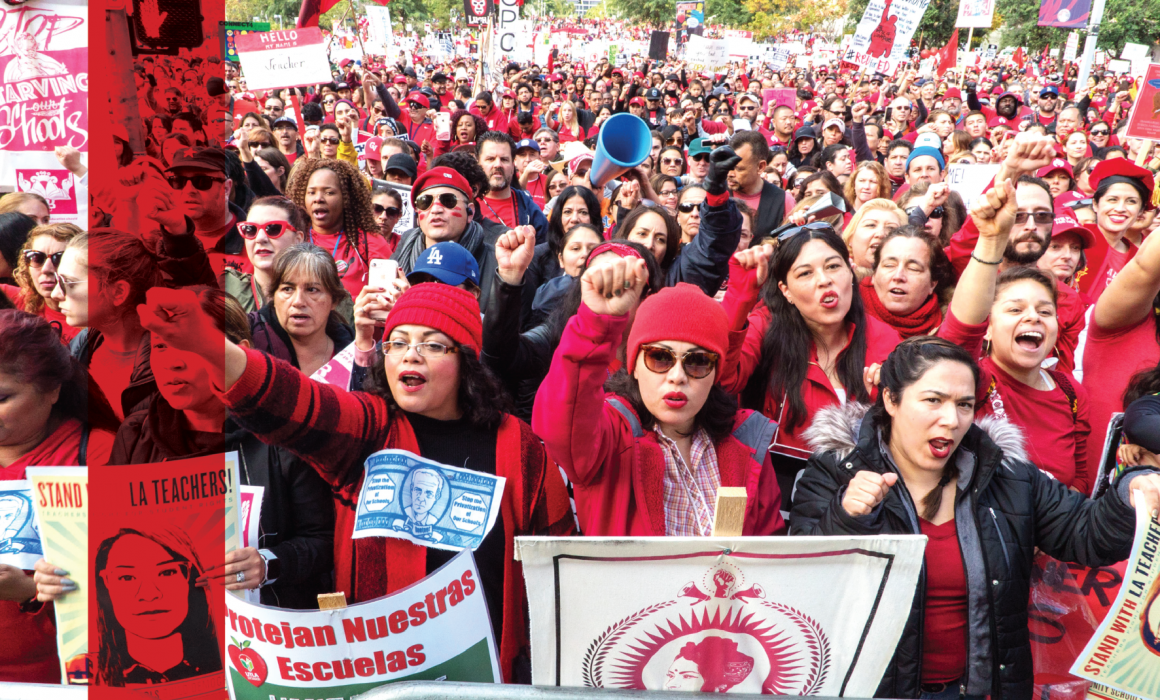
Quick: Think about California’s public schools. What comes to mind?Your first thoughts are likely of students learning, perhaps the excitement of a new school year. Maybe, you’re remembering your own school days. Hold those thoughts but add another. This Labor Day weekend I ask you to also think about California’s public schools from a teacher’s perspective: as a workplace.
From the border with Mexico to the Oregon state line, more than 600,000 educators – teachers, school support staff and administrators – are employed by California school districts.
When it comes to wages and economic conditions, California has one of the highest costs of living of any state. Yet salaries for teachers trail most other professions that require college degrees. Labor and education are inextricably linked. Teachers can’t help but see the connection.
Job security — or perhaps I should say job insecurity – is a growing issue in public education. Despite a teacher shortage, both in our state and nationally, 100 California school districts issued layoff notices to around 2,000 teachers last spring, citing revenue shortfalls, EdSource reported at the time. Thanks to efforts by local teachers’ unions, most of these layoffs were rescinded. But for how long?
Working conditions for educators are often deficient. A lack of support staff and tight budgets mean that teachers are required to do more with less. A recent report pegged California’s student-teacher ratio among the worst five states in the U.S.
We are not the only ones who see that the problems in education and labor need immediate attention. I was heartened when I attended the Democratic National Convention a couple weeks ago to find that many of the speeches from the podium focused on education and labor. The Democrats’ nominee for Vice President, Tim Walz, spoke about his career as a schoolteacher and coach. Labor leaders such as NEA President Becky Pringle, UAW President Shawn Fain and AFL-CIO President Liz Shuler championed issues important to working families.
But education shouldn’t always be in one box and labor issues in another. That’s why, for the past month, the California Teachers Association has been running a series of statewide TV ads showing Californians that public school teachers are living in the nexus between education and labor in their classrooms every day. The ads highlight teachers such as:
- Lauren Pomrantz, a Santa Cruz first grade teacher, who explains how a loss of funding has led to dozens of teacher layoffs and class sizes at maximum capacity.
- Los Angeles high school teacher Gina Gray, who describes how she has to do after-school tutoring and deliver groceries just to pay the rent.
- Los Angeles middle school teacher Noriko Nakada, who talks about the need for more support personnel at her school and how she has fought for those resources alongside her union coworkers.
The challenges that teachers such as Pomrantz, Gray and Nakada face daily are not unique. The high cost of living in our state, combined with large class sizes, and a lack of support have made retaining and recruiting teachers a difficult task. As just one example, last year, the San Francisco Unified School District had a glaring teacher shortage at the start of the school year, with nearly one in four teaching positions unfilled.
We can do better. With the fifth largest economy in the world, there is no excuse for California to come up short when it comes to paying teachers a salary they can live on, and fully staff schools so kids aren’t crammed into overcrowded classrooms.
There’s a Labor Day lesson here. To improve the quality of California childrens’ education, make schools better places to get the job done.
David Goldberg is president of the California Teachers Association.

The Discussion 0 comments Post a Comment